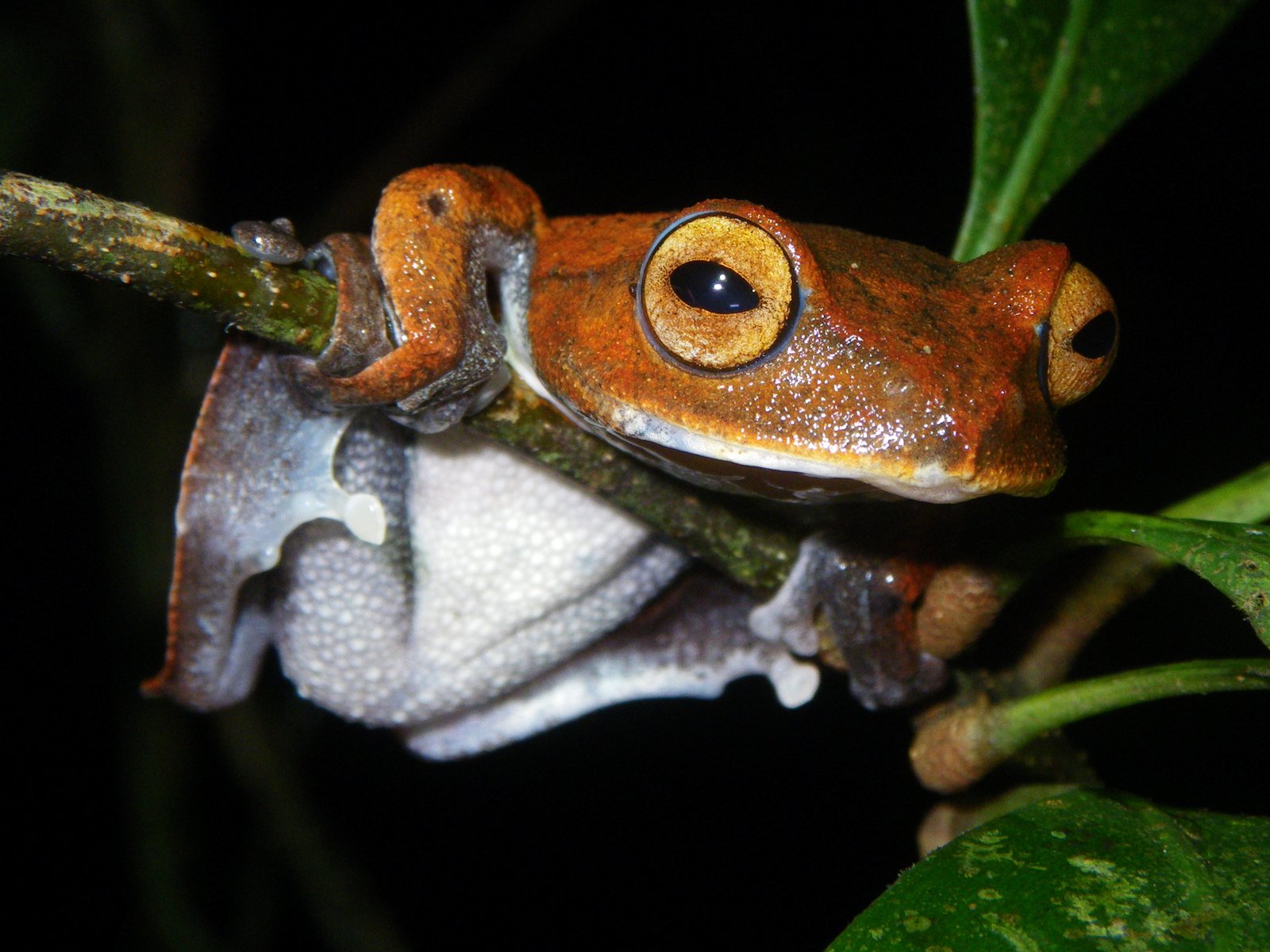‘Red Listing’ to help save Southeast Asia’s Amphibians

Yin yang frog
Image: Jodi Rowley© Jodi Rowley
A first step in biodiversity conservation is determining which species are most threatened with extinction.
Southeast Asia has an amazing diversity of amphibians, something we’re becoming increasingly aware of due to recent discoveries. A combination of field expeditions and genetic investigation has revealed nearly 100 new amphibian species in the last 10 years alone.
Southeast Asian amphibians are also some of the most threatened in the world. With one of the highest deforestation rates globally and many species being harvested for the pet trade and traditional medicines, it seems clear that this region should be a priority for amphibian conservation.

The Vampire Flying Frog Rhacophorus vampyrus
Image: Jodi Rowley© Jodi Rowley/Australian Museum
Despite a large amount of scientific information being gathered about the amphibians of this region, a major obstacle to amphibian conservation in Southeast Asia is transforming this into something clearly actionable. Fortunately there is a great tool that helps us translate scientific information and expert opinion into data useful for conservation – and that’s where I come in.
The IUCN Red List of Threatened Species (the "Red List") lets us compile all information relevant to a particular species’ conservation and determine how threatened it is, which in turn helps us understand the best course of action to save it and which species need our limited conservation recources. This information is then made accessible to conservation managers, and indeed anyone with an internet connection. Multiply that by more than 6,000 frogs, newts, salamanders and caecilians already on the Red List, and you have the best starting point for holistic amphibian biodiversity conservation possible.

Helen's Flying Frog (Rhacophorus helenae)
Image: Jodi Rowley© Australian Museum
But nearly all ‘red listing’ was being done by a handful of passionate biologists in their spare time, which meant getting those 100 new Southeast Asian amphibian species (plus some older ones) the conservation solutions many of them so desperately need quite late – maybe even too late. However, thanks to the generosity of the Australian Museum Foundation (AMF), a new project is underway to make sure that doesn’t happen: the AMF Amphibian Conservation Internship. I’m the lucky intern, and this exciting project is equipping me to dedicate more time and resources than ever to this vital process to help ensure Southeast Asia’s amazing amphibians can survive well into the future.
So far, it’s going swimmingly; we’ve already assessed two frogs (the vampire flying frog and Helen’s flying frog) and a newt (the Lao warty newt), each listed as Endangered and now receiving significant attention – check them out at www.iucnredlist.org.

The Vampire Flying Frog (Rhacophorus vampyrus) was listed as Endangered on the IUCN Red List in 2014.
Image: IUCN© IUCN
But that’s just the start, and there’s plenty more to do. I have one day a week for one year to figure out what I can about the distributions, populations, ecology, threats and best conservation practices for nearly 100 invaluable Southeast Asian amphibians and get them on that list – wish me luck, and watch this space!
Tim Cutajar
Australian Museum Foundation Amphibian Conservation Intern

Tim Cutajar and toad, El Fuerte, Mexico.
Image: Ubaldo Castillo© Ubaldo Castillo
Acknowledgements
This is a super-collaborative project, and I’d like to thank the Australian Museum Foundation for their generous funding, Dr Jodi Rowley for her amazing expertise and support offered throughout the process, the rest of the Amphibian Red List Authority Southeast Asia Working Group for their tireless work and passion, and all of the amphibian experts throughout the region, whose continuous contributions we couldn’t do without.











